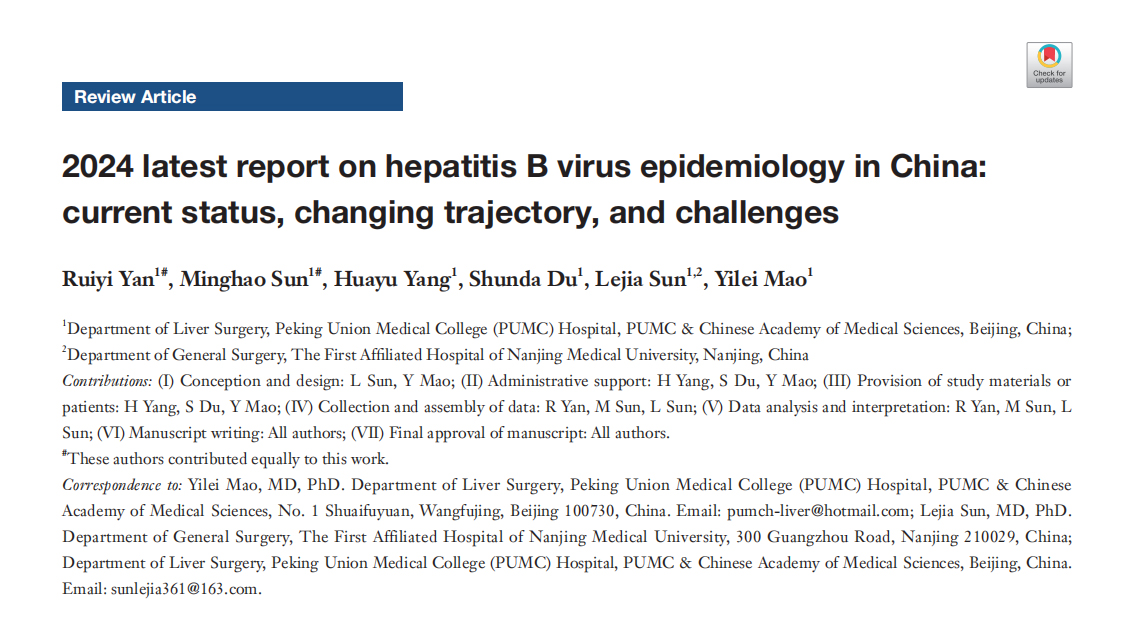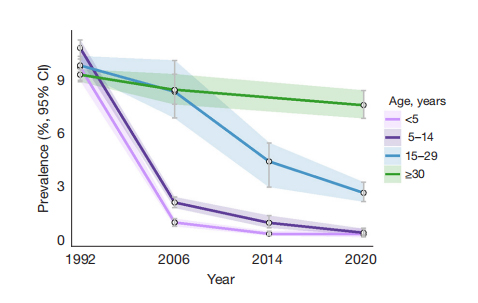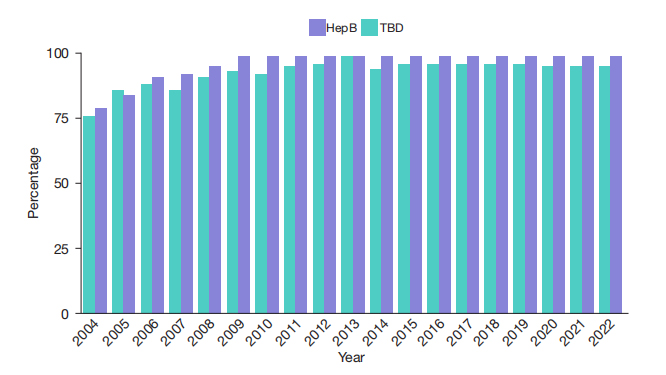Drawing on the latest 2024 survey results of the Chinese Center for Disease Control and Prevention and World Health Organization data, Professor Mao Yilei's team from the Department of Liver Surgery, PUMCH recently published a comprehensive analysis in the prestigious journal Hepatobiliary Surgery and Nutrition (HBSN) titled "2024 latest report on hepatitis B virus epidemiology in China: current status, changing trajectory, and challenges".
The research highlights China's remarkable progress in hepatitis B control over the past three decades and outlines remaining challenges. The data reveals that China is approaching WHO's 2030 targets of elimination across multiple indicators, including HBsAg prevalence in general population and among children under 5, and mother-to-child transmission. Most impressively, the hepatitis B virus (HBV) carrier rate among those under 15 years old has fallen to below 1%. This achievement signals that in 20-30 years, as older infected populations naturally decline, China's overall HBsAg prevalence will decrease dramatically. Through three innovative strategies—universal vaccination with mother-to-child transmission prevention, early screening and treatment initiatives, and making treatment more accessible—China has established itself as a global leader in hepatitis B control, creating a replicable model for developing nations worldwide.

Vaccination remains the most effective prevention for HBV. China has achieved remarkable coverage rates, with 99.6% of newborns receiving the complete three-dose regimen, and 95.6% receiving the crucial birth dose timely—far exceeding the global average of 85%. The impact has been dramatic: by 2024, the HBsAg seroprevalence among children under 5 dropped to 0.3%, representing a 96% reduction since 1992. The infection rate for infants under 1 year is now below 0.1%, meeting WHO's 2030 target of keeping children infection <0.1% by 2030, while mother-to-child transmission has plummeted to just 0.23%. Regarding treatment, 94% of patients meeting guideline criteria can access timely and effective therapies. From 1990 to 2020, hepatitis B-related liver cancer incidence fell by 60% and mortality by 64.2%, sparing tens of millions from liver cirrhosis and liver cancer.

▲HBsAg prevalence trends in China by age group (<5, 5-14, 15-29, and ≥30 years old) from 1992-2020
The leap from a 10% HBsAg seroprevalence to just 0.3% represents a profound shift in China's HBV landscape, with dramatic reductions in infection rates, transmission rates, and mortality rates. This remarkable change reflects China's unwavering commitment and strategic wisdom in tackling this public health challenge.

▲Hepatitis B vaccination coverage in China, 2004-2022
China's journey began in 1992 when the hepatitis B vaccine was incorporated into the national immunization program, providing free vaccination for newborns. A supplementary campaign reached 68 million previously unimmunized children, leading to nationwide coverage by 2005. China pioneered the "zero mother-to-child transmission" initiative—the first of its kind globally—implementing an innovative three-pronged approach: universal screening of pregnant women, dual prevention measures for newborns, and antiviral treatment for high-risk pregnant women. This comprehensive "universal vaccination plus mother-to-child transmission prevention" strategy has driven hepatitis B incidence to historic lows in China.
Early detection and intervention have also been crucial. Through free screening programs, infected individuals can be identified earlier, which allows them to receive timely treatment that slows disease progression and reduces risks of complications like cirrhosis and liver cancer. China has implemented a free five-test universal screening for adults aged 18-70 in high-prevalence regions like Fujian and Guangdong provinces, establishing efficient referral systems through primary healthcare networks. These screening programs play a vital role in early detection and treatment. The effectiveness of these prevention strategies provides valuable and practical guidance for health authorities in rational resource allocation and development of targeted prevention interventions.
Addressing medication accessibility, China has dramatically reduced costs through national drug negotiations and centralized volume-based procurement initiatives. Many first-line antiviral medications have become significantly more affordable, positioning China as a global leader in medication affordability. The Guidelines for Prevention and Treatment of Chronic Hepatitis B (2022 Edition) expanded treatment eligibility to 94% of patients—far exceeding international standards. More chronic patients now receive timely antiviral therapy, reducing risks of complications like cirrhosis and liver cancer and significantly enhancing quality of life. The significantly wider scope of treatment and effective disease control approaches bring China closer to the WHO's target of eliminating viral hepatitis as a public health threat by 2030.
"China has evolved from a country with high hepatitis B burden to an exemplary model in prevention, transforming the lives of hundreds of millions of families in a single generation", noted Professor Mao Yilei. Through government-led immunization programs, drug accessibility reforms, and coordinated multi-sector collaboration, China has achieved fast, remarkable disease burden reduction despite its vast population. As one of the countries most affected by hepatitis B globally, China's approach offers valuable insights for developing nations. However, managing the health needs of 75 million existing hepatitis B patients remains challenging, requiring continued expansion of screening programs, improved treatment access, and research breakthroughs toward clinical cures.
Written by Chen Xiao
